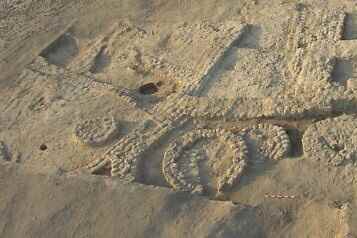Posted at 7:00 a.m.
The first orchards
Domestication of the fruit first occurred 7,000 years ago in the Jordan Valley, according to Israeli archaeologists. They unearthed, in the site of Tel Tsaf, the remains of olive and fig trees, silos and evidence of trade with regions as far away as the Caucasus. Researchers from the Hebrew and Tel Aviv universities, who report their results at the end of May in Scientific Reportsare certain that these are domesticated trees because the wild varieties of fig and olive trees do not grow in the Jordan Valley.
Quiz
What use has just been discovered for magnetars?

IMAGE FROM THE INTERNATIONAL CENTER FOR RADIO ASTRONOMIC RESEARCH WEBSITE
Illustration of a magnetar
They could serve as an astrophysical clock because of their very regular signals called “fast radio bursts” (FRB), according to Montreal researchers. In Nature in mid-July, they describe how the radio telescope Chemistry, in British Columbia, discovered the longest known FRB, FRB 20191221A, located a billion light years away. It lasts 3s, 1000 times longer than the average FRB, and includes minor bursts that repeat every 0.2s “like a heartbeat”.
The number
300kg

PHOTO FROM THE FISHBIO WEBSITE
The 300 kg ray caught in Cambodia in the Mekong in June
This is the weight of a ray caught on the Mekong in Cambodia in mid-June, a record for 50 years, according to the NGO Fishbio. This is a sign that the big fish are returning to this crucial river for Southeast Asia, after being driven out by the erection of 140 hydroelectric dams that led to an unprecedented drop in water levels in Cambodia. for 60 years. Fishbio pays fishermen to record very large catches, which are then released into the river.
A mummified baby mammoth discovered in the Yukon
-

PHOTO PROVIDED BY YUKON GOVERNMENT
The baby mammoth Nun Cho Ga
-

PHOTO PROVIDED BY YUKON GOVERNMENT
The baby mammoth Nun Cho Ga
1/2
A mummified baby mammoth has just been discovered in the Yukon, announced the government of this territory. It is the most complete mammoth mummy ever found in North America, if not the world, say paleontologists at the University of Calgary. Named Nun Cho Ga, or “Big Baby Animal”, by the neighboring Dene First Nation, Trʼondëk Hwëchʼin, the 1.4 m mummy was discovered on June 21 at a depth of 5 m in a gold mine. The animal was buried 30,000 years ago. A nearly intact baby mammoth was found in 2007 in Siberia, according to Alberta researchers who worked there.
the James Webb threatened by micrometeorites

IMAGE FROM NASA WEBSITE
Image of telescope mirrors James Webb before (left) the May collision and after
The damage caused in May by a micrometeorite to the space telescope James Webb are larger than expected, according to a report unveiled in mid-July by NASA. The impact had been reported in June, but was considered minor. The new analysis shows that it increased the inaccuracy of the hit mirror by five times. This error can however be compensated by a reorientation of the other 17 mirrors. The recent report judges that the risk of such a collision, previously estimated at one every two years, with one smaller collision per month, may be higher than expected, because the James Webb is located 1.5 million kilometers from Earth, whose upper atmosphere protects the satellites from micrometeorites. It could be that the James Webb should be reoriented periodically for added protection.

